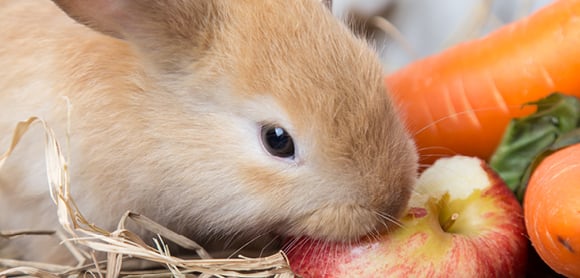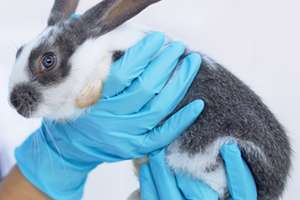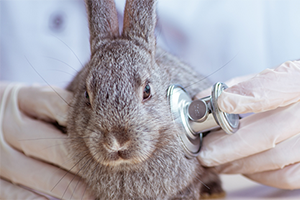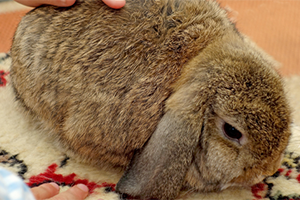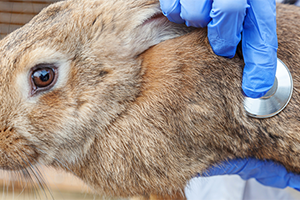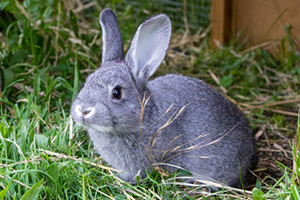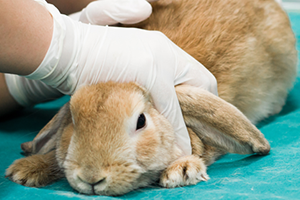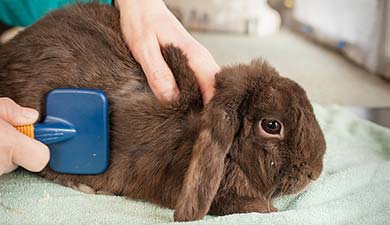Your ultimate guide to gastrointestinal stasis in rabbits
Quick Links
What is gastric stasis in rabbits?
GI stasis occurs when a rabbit's digestive system either slows down or stops functioning completely. When this happens, bacteria can build up within their intestines, creating an excessive amount of gas. This is painful and discourages rabbits from eating or drinking.
As your rabbit becomes dehydrated, the contents of their intestines become more compacted, meaning your rabbit will find it harder to poo. Over time, the bacteria that’s built up within their slowed-down digestive system can start to release toxins that can make your rabbit even more ill.
What causes gastric stasis in rabbits?
GI stasis can be caused by a number of factors, all of which can cause the digestive system to slow down or stop. A common cause is a diet that’s too high in carbohydrates from pellets and vegetables, and too low in fibre from hay, as without enough fibre a rabbit’s digestive mobility decreases. Dehydration can also cause GI stasis, as dry material creates an impaction within a rabbit’s intestines.
Stress and pain can cause GI stasis, as these may lead to your rabbit eating less than normal. Lack of exercise can also reduce gut mobility and increase the chances of GI stasis developing. Hairballs were once thought to cause GI stasis, but we now know they’re actually a result of a rabbit’s digestive system slowing down. Rabbits are fastidious groomers, so often have some hair within their digestive system, and usually this passes through with no issues. But when a rabbit’s digestive system slows, this hair can cause an impaction.
Symptoms of gastrointestinal stasis in rabbits
GI stasis can happen very quickly, or over a longer period. Watch out for signs including:
- Bloating
- Loss of appetite
- Hunched posture
- No faecal pellets at all
- Lethargy
If you’re concerned your rabbit is suffering from GI stasis, make an appointment with your vet as soon as possible.
Treating gastric stasis in rabbits
Your vet will ask questions to find out what may have caused your rabbit’s GI stasis. They’ll ask whether their eating and drinking habits are normal, and they may take X-rays to see if they can locate a blockage within the digestive tract, or to confirm a build-up of gas. Blood tests might also be carried out.
Once your vet has confirmed your rabbit is suffering from GI stasis, a range of treatment options will be offered, including:
- Fluid therapy to aid rehydration
- Nutritional support if your rabbit isn’t eating
- Pain relief
- Mobility medication to stimulate the digestive tract
- Antibiotics
If the GI stasis is due to pain from an abscess or overgrown teeth, your vet will carry out treatments to solve those issues. They may also advise on some management changes like dietary adjustments or more exercise.
How to prevent gastrointestinal stasis in rabbits
There are a number of things you can do to reduce the risks of your rabbit developing GI stasis. First, make sure your rabbit is fed a high-fibre diet with plenty of hay. It is recommended that they are offered their body volume in hay every day. This can be supplemented with a very small amount of rabbit pellets, plus vegetables and a tiny amount of fruit. Make sure they have company, as solo rabbits can become stressed or anxious.
Regular health checks, both at home and with your vet, are also important, so you can pick up any issues like overgrown teeth. Plenty of exercise can also encourage gut mobility and decrease the risk of GI stasis. Make sure your bunny has a large run, or plenty of supervised time to explore either inside or outside.
Petplan is a trading name of Pet Plan Limited (Registered in England No. 1282939) and Allianz Insurance plc (Registered in England No. 84638), Registered office: 57 Ladymead, Guildford, Surrey GU1 1DB.
Pet Plan Limited is authorised and regulated by the Financial Conduct Authority. Financial Services Register No. 311969. Allianz Insurance plc is authorised by the Prudential Regulation Authority and regulated by the Financial Conduct Authority and the Prudential Regulation Authority. Financial Services Register No. 121849. Pet Plan Limited is a subsidiary of Allianz Insurance plc.




